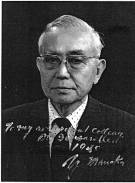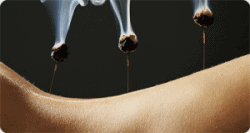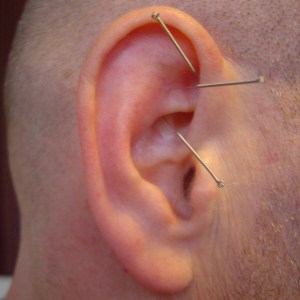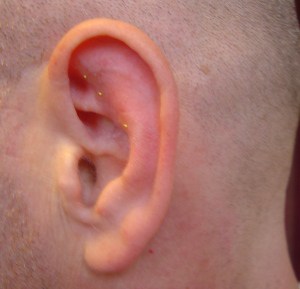Japanese Acupuncture
Japanese acupuncture has its origins in the ancient classical Chinese texts which came to Japan around 1000 A.D. The many schools and styles that developed independently over the centuries tend towards a practical, hands-on approach to treatment.
How is Japanese Acupuncture different?
Firstly, Japanese acupuncture is very gentle. Needles are extremely fine and are generally inserted very superficially, just beneath the skin. Even very sensitive patients are able to tolerate this type of treatment and it is a characteristic of Japanese Acupuncture to adjust treatment to accommodate the patient who is sensitive. Diagnostic techniques make use of gentle abdominal and channel palpation, as well as an examination of the pulse. Japanese acupuncture always works on both the root and the branch, that is, the underlying cause and the presenting symptoms. Different methods or styles are used in treatment, depending on the patient’s needs. This means that treatment is different for each individual. In addition, an extensive range of treatment strategies is used to treat presenting, often acute symptoms. These include the use of moxa, cupping, tuina massage, ear acupuncture, press spheres and intradermal needles (for more on these, see below).

Dr Manaka’s Yin Yang balancing Channel Therapy

Dr Yoshio Manaka was a doctor trained in western medicine and came from a family of physicians. From the end of the Second World War, Dr Manaka studied with all his contemporary Japanese masters. He devoted the rest of his life to developing a systematic acupuncture treatment protocol which has proved reliable and effective. Treatment is carried out in four steps to address both the root (underlying imbalance) and branch (presenting symptoms). His innovative use of ion-pumping cords, which are attached to acupuncture needles during treatment, brings about an energetic realignment of the patient.
Dr Manaka was a scholar and linguist, as well as a poet, artist, physician and healer. He devoted his life to developing a treatment protocol that is practical, provable and repeatable in the clinical setting.
Meridian Therapy
Meridian therapy (known as ‘keiraku chiryo’ in Japanese) developed in Japan during the ’30s as an attempt to return to traditional principles in acupuncture based on the original classical texts. This system aims to reinstate the meridian system as the central concept of acupuncture with its emphasis on the circulation of ‘Qi’ (vital energy) through a series of channels or meridians. Traditional Japanese approaches to diagnosis were developed (particularly in pulse-taking) to create a systematic approach to treatment.
Meridian Therapy uses the theory of the five elements (or phases, based on the cycle of the year) to diagnose primary imbalances in the meridian system. Where a deficiency is observed, specific points are needled to bolster the patient, and where an excess is found, other points are chosen to restore balance.
Moxibustion
Moxibustion is the burning of a herb generally known as moxa, Artemisia sinensis. The leaves of the herb are dried and rolled into a uniform golden yellow ‘wool’ or’punk’ that burns evenly. Moxa is used in many forms: small cones that are warmed on the skin; tiny threads of moxa may be placed on a specific point; larger balls which are placed on the handle of the needle and lit.
The heat from the herb has a warming and relaxing effect. Therapeutically the heat from the moxa strengthens the Yang aspect, dispersing cold and stagnation. The resulting increase in the flow of blood and qi relieves pain and stiffness in the muscles and joints.

Direct moxa, which is a technique specific to Japanese acupuncture, is particularly effective for the treatment of inflammatory conditions. Research has shown it to create an anti-inflammatory response in in tissues surrounding the site of moxibustion.
For more on moxibustion and inflammatory bowel disease, go to http://www.ncbi.nlm.nih.gov/pubmed/24204388
Cupping

Cupping therapy is an ancient practice in which a local suction is created on the skin; practitioners do this to encourage qi and blood flow. A partial vacuum is created in the cup to achieve the required suction with either fire or a small hand pump.
Auricular Acupuncture
Japanese ear acupunctureThe ear is a reflection in miniature of the entire human body. Each part of the body has a corresponding auricular point or area. By stimulating these points one can regulate dysfunction of their corresponding body part. Auricular therapy can be used on its own, using point prescriptions for the treatment of particular conditions. It can also be used to complement and reinforce an acupuncture treatment through the application of press spheres which can be left in place for longer periods.

Press spheres, press tacks and intra-dermal needles

In order to reinforce the effects of a treatment and to continue to give the body very low doses of continued stimulation, press spheres, press tacks and intra-dermal needles are sometimes incorporated in an acupuncture treatment. These tiny press balls or sub-cutaneous needles are placed at specific points on the body or in the ear at the end of a treatment. They are painless and can be retained for up to a week.
